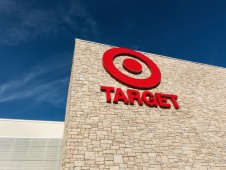[vc_row full_width=”” parallax=”” parallax_image=””][vc_column width=”1/1″][vc_column_text css_animation=””]The secret to reinventing retail can be summed up in three words.[/vc_column_text][/vc_column][/vc_row][vc_row full_width=”” parallax=”” parallax_image=””][vc_column width=”1/1″][vc_text_separator title=”The Consumer Experience” title_align=”separator_align_left” align=”align_center” color=”grey” style=”” border_width=”” el_width=””][vc_column_text]Sounds pretty squishy, doesn’t it? And maybe even not all that new. But if you’re a retailer grappling with what it means to serve a consumer who’s forcing that reinvention and now shopping with their digital devices in hand, it’s the only litmus test you’ll need to help focus and prioritize your “reinvention” agenda.
Because focusing on – and then delivering a worthwhile consumer experience — is the only way that retailers can build (and then foster) the relationship of trust that will turn consumers into loyal and committed customers.[/vc_column_text][vc_text_separator title=”And more importantly, create the barriers to entry essential to keeping customers from easily defecting.” title_align=”separator_align_left” align=”align_center” color=”grey” style=”” border_width=”” el_width=””][vc_column_text] Last week, executives from the payments and retail ecosystems converged in Chicago for a day and a half to debate what it means to reinvent retail. We talked about all of the things that go into the consideration set when the reinvention of retail is discussed. We talked about data and loyalty and the impact of digital channels on a consumer’s path to purchase. We talked about what it means to be a digital retailer and what today’s digital shopper looks like. We talked about security and mobile wallets and the changing environment around the point of sale. We talked about what’s getting in the way of merchants capitalizing on the $300 billion cross-border opportunity and the complexities facing physical retailers trying to become omnichannel leaders.
Last week, executives from the payments and retail ecosystems converged in Chicago for a day and a half to debate what it means to reinvent retail. We talked about all of the things that go into the consideration set when the reinvention of retail is discussed. We talked about data and loyalty and the impact of digital channels on a consumer’s path to purchase. We talked about what it means to be a digital retailer and what today’s digital shopper looks like. We talked about security and mobile wallets and the changing environment around the point of sale. We talked about what’s getting in the way of merchants capitalizing on the $300 billion cross-border opportunity and the complexities facing physical retailers trying to become omnichannel leaders.
We also released lots of great new research to help sharpen the insights of everyone there, every single one of which are eyeballs deep in building their 2016 strategic plans and innovation roadmaps.[/vc_column_text][vc_text_separator title=”Here’s the zinger.” title_align=”separator_align_left” align=”align_center” color=”grey” style=”” border_width=”” el_width=””][vc_column_text]The new research that we presented on the first day — for the first time — actually quantifies the importance of the consumer experience on how retail will evolve and what will set the winners apart.
We asked more than 2,000 consumers to tell us what influences where they start their shopping journey. Not surprisingly, what drives that decision, in the first instance, is what they want to buy.[/vc_column_text][vc_text_separator title=”But what determines where they go to buy that product is trust.” title_align=”separator_align_left” align=”align_center” color=”grey” style=”” border_width=”” el_width=””][vc_column_text]So, you say, what’s so insightful about that? What consumer would ever go to a merchant they didn’t trust?
True.
But, one of the points that I made in my opening remarks last week is the importance of focusing on the hidden and the subtle in the clues that consumers are leaving for retailers and innovators today. The hidden and the subtle in understanding this finding is analyzing how many ways consumers articulated how their trust is acquired – and then sustained.
Advertisement: Scroll to Continue
And that’s all about their experience with the merchants they choose to spend their time and money with — an experience that’s shaped by going to a retailer that they know has incentives tailored to their preferences, that they know offers a good price for what they want to buy, that can deliver what they order in a time frame that’s relevant to them (and at a cost that is, too), and who’s provided a great experience in the past.[/vc_column_text][vc_text_separator title=”Relevant Incentives + A Fair Price + Timely Delivery + A Predictable Experience = Consumer Trust.” title_align=”separator_align_left” align=”align_center” color=”grey” style=”” border_width=”” el_width=””][vc_column_text]Based on the findings of our research, that all adds up to roughly 80 percent of the reasons why consumers chose the retailers they do business with.
Trust that the retailer will deliver a great consumer experience.
Trust that results in an unbreakable consumer/retailer bond.
Trust that in an otherwise stressful world makes a retailer easy to do business with.[/vc_column_text][vc_text_separator title=”Which is why The Consumer Experience now drives every single decision that retailers make about everything they’re doing now.” title_align=”separator_align_left” align=”align_center” color=”grey”][vc_column_text]And what every solutions provider hawking innovation under the rubric of “retail reinvention,” better make sure their solutions enable, too.
 At our Retail Reinvention summit last week, Target’s innovation guru spoke at length about the investments it’s making in creating a superior consumer experience in their stores and Target top of mind. Target isn’t worrying about Kohl’s or Walmart as its competition, it’s protecting its flanks from Amazon. And Target is using its physical and digital assets to create a better guest experience.
At our Retail Reinvention summit last week, Target’s innovation guru spoke at length about the investments it’s making in creating a superior consumer experience in their stores and Target top of mind. Target isn’t worrying about Kohl’s or Walmart as its competition, it’s protecting its flanks from Amazon. And Target is using its physical and digital assets to create a better guest experience.
Whether that experience is “order online and pick up in-store,” or how merchandise is displayed in stores to make discovery a reason for consumers to visit, or investments in technology that make it easier for their guests to keep track of their savings via the Cartwheel app, it’s all about using technology to enhance the guest experience regardless of how the consumer wants to shop. Two of Target’s latest initiatives involve the use of holograms to show their guests what clothes look like on them – without the hassle of going into a fitting room and trying them on – and opt-in beacon technology to show guests relevant offers, and re-sort their shopping lists so that when consumers travel through the store, relevant items appear when the consumer is standing within striking distance of them.
All in the name of establishing the trust that comes with enabling an easy and convenient shopping experience.
 It’s not exactly intuitive to think of Domino’s as a digital retailer. But that’s exactly how they describe themselves. Fifty percent of Domino’s business now comes from online channels – and that has forced this American restaurant chain and pizza delivery operation to think very differently about its business and the customer experience it’s creating. With a guarantee of 30 minutes or less, its food operation has to be as proficient as the pit crew at the Indy 500. But that is no more important than the trust consumers have in the integrity of the product it delivers.
It’s not exactly intuitive to think of Domino’s as a digital retailer. But that’s exactly how they describe themselves. Fifty percent of Domino’s business now comes from online channels – and that has forced this American restaurant chain and pizza delivery operation to think very differently about its business and the customer experience it’s creating. With a guarantee of 30 minutes or less, its food operation has to be as proficient as the pit crew at the Indy 500. But that is no more important than the trust consumers have in the integrity of the product it delivers.
Domino’s prides itself on the craftsmanship of its pizzas and regards its physical establishments as important touchpoints for consumers to see how the product they now increasingly order online is made. These “pizza showrooms” reinforce the quality level of the product that people are buying, whether that purchase is made in that store or online.
Domino’s is using its physical presence to establish the trust it needs to keep its brand top of mind, as it increases its digital footprint and refines the customer experience.
Consumer trust – or rather not wanting to lose it — is what’s driving one of the biggest areas of investment facing retailers today: security. When two of the biggest were asked last week whether fraud was really a problem – in the face of factual evidence that suggests that as a percentage of sales, it may not be the house that’s burning down in retail – they were emphatic in their response: yes, it is. But the security problem isn’t articulated so much as a fear that their current systems are flawed or even how much fraud costs as a percentage of sales – but in the cost to their reputations if cardholder information were compromised.
Security decisions are now simultaneously about how a variety of new technologies can make the existing POS systems more secure – reinforcing trust – but also reimagining “checkout” using apps and digital devices, creating a better customer shopping experience.
The intersection of point of sale and the reinvention of the customer experience is one of the hottest topics in the restaurant and QSR space right now. The move to EMV has surfaced a series of discussions throughout the industry, but not over their concerns of being hacked. In the restaurant space, the conversation is all about the impact of EMV to the guest experience – whether that guest is standing in line at a QSR or seated at a 3-star Michelin restaurant. A fear of denigrating the guest experience is what’s driving this sector full speed ahead to use mobile devices and apps to leapfrog existing POS environments and improve the customer dining experience, while keeping trust intact.
On the loyalty front, brands and innovators alike are struggling to use data to truly improve the consumer shopping experience. This is being done in the face of competition for the attention span of a consumer whose buying habits have changed post-financial crisis and who has more brands using more tools than ever vying for her business.
In most cases, the experience has been anything but satisfying. Consumers have watched points — table stakes in the loyalty arena — decrease in value over time. But it’s even worse than that. Loyalists who’ve pledged their allegiance to those brands now feel duped and are starting to see the fallout that comes when consumer trust is lost when their experience and expectations are changed.
Data, many say, is the silver bullet cure-all to this problem — get data, mine data and deliver a better and more optimized experience for the consumers. With knowledge comes the power to reward the best customers in the most relevant way, is the mantra. But this is where understanding the consumer experience – or the lack thereof — becomes key. Make it too hard to enroll, earn, keep track, redeem and be recognized and rewarded as a loyal customer, and the consumer experience falls apart. And trust becomes a big rock that gets harder and heavier to push up the hill.
But perhaps nowhere is the paradigm of trust and the consumer experience more inextricably linked than in the realm of the mobile wallet.
For the last five or so years, the mobile wallets conversation — and just about all of the activity in that area — has been on the in-store checkout experience. The rationale for that is simple to understand: in absolute numbers, that’s where the bulk of the spending still happens.
 But as all of you who regularly read my writings and PYMNTS know, it’s also where consumers don’t have a problem today. Swipe is fine and cards work well. And as we all learned last week, what everyone regarded as the mobile payments category trailblazer, Apple Pay, has failed to inspire consumers to ditch plastic cards for mobile phones, even when they are in stores where they can use their iPhone 6’s to pay and have Apple Pay installed on their phones with their favorite card attached.
But as all of you who regularly read my writings and PYMNTS know, it’s also where consumers don’t have a problem today. Swipe is fine and cards work well. And as we all learned last week, what everyone regarded as the mobile payments category trailblazer, Apple Pay, has failed to inspire consumers to ditch plastic cards for mobile phones, even when they are in stores where they can use their iPhone 6’s to pay and have Apple Pay installed on their phones with their favorite card attached.
The reality is that most mobile wallets are solutions to a problem that consumers don’t have. And more importantly, no one’s created a “mobile wallet” experience compelling enough for consumers to willingly change their existing habits and use consistently in a physical storefront.
But as more consumers use digital and other connected devices in every other aspect of their lives, including as part of their shopping experience, that’s the opportunity that awaits retailers who seek to use those devices to create that new customer experience.
Which may have very little to do with payment in the first instance and more to do with creating a better, simple – and more familiar – shopping experience for the consumer.
 If, as our keynote last week, Marcus Lemonis, aka, “The Profit,” said is true, keeping things simple is the clearest path to consumer trust. That means that the winners will be those who use technology to create a consumer experience that makes them easy to do business with. If, as Target’s innovation chief says, ease is the ticket to play, then it seems that ease is also the ticket to the trust that will keep consumers committed.
If, as our keynote last week, Marcus Lemonis, aka, “The Profit,” said is true, keeping things simple is the clearest path to consumer trust. That means that the winners will be those who use technology to create a consumer experience that makes them easy to do business with. If, as Target’s innovation chief says, ease is the ticket to play, then it seems that ease is also the ticket to the trust that will keep consumers committed.
Based on the buzz coming out of last week’s event, reinventing retail is likely to become less about asking consumers to change everything about how they pay — when everything else about the checkout experience remains the same – and more about reimagining what point of sale means to a consumer in a digital world. The implications are interesting, and perhaps even a bit controversial. It might mean that the best consumer experience simply extends and enables the experiences that consumers know and trust today at the retailers they already know and trust, too.
Reinventing retail, in that case, may become the trigger for the reinvention of the entire payments and commerce ecosystem.[/vc_column_text][/vc_column][/vc_row]
 Last week, executives from the payments and retail ecosystems converged in Chicago for a day and a half to debate what it means to reinvent retail. We talked about all of the things that go into the consideration set when the reinvention of retail is discussed. We talked about data and loyalty and the impact of digital channels on a consumer’s path to purchase. We talked about what it means to be a digital retailer and what today’s digital shopper looks like. We talked about security and
Last week, executives from the payments and retail ecosystems converged in Chicago for a day and a half to debate what it means to reinvent retail. We talked about all of the things that go into the consideration set when the reinvention of retail is discussed. We talked about data and loyalty and the impact of digital channels on a consumer’s path to purchase. We talked about what it means to be a digital retailer and what today’s digital shopper looks like. We talked about security and  At our
At our  It’s not exactly intuitive to think of
It’s not exactly intuitive to think of  But as all of you who regularly read
But as all of you who regularly read  If, as our keynote last week,
If, as our keynote last week, 


